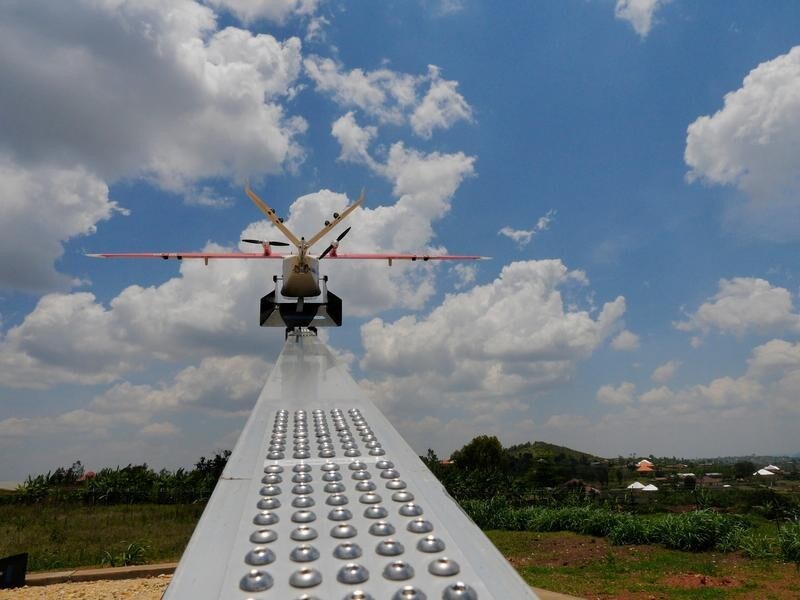How China's high-tech boom can help global health

Chinese innovation could help to increase vaccination levels around the world
Image: REUTERS/Carlf Zhang
Stay up to date:
Future of Global Health and Healthcare
Earlier this year at the World Economic Forum, President Xi Jinping delivered a hearty defence of globalisation. To anyone paying attention during the last several decades this should have come as no surprise. China is the world’s largest economy (in PPP terms) and a global force in manufacturing and trade. What has been less frequently observed in global media is that China has taken on increasingly critical roles in global health and development, explicitly linking them as necessary to sustain and accelerate global economic growth.
And now this week as leaders converge on Dalian for the World Economic Forum’s Annual Meeting of the New Champions, globalisation needs another kind of Chinese champion – its private sector innovators. China is in the midst of a technology revolution. Home to more electric cars than anywhere in the world, China’s firms are driven by the energy of its enormous market and a fierce competition to innovate products that work for people as and where they live.
China is home to the shared-bike revolution that is taking over its cities and transforming urban transportation. WeChat Wallet has blown up the e-pay market, linking services in every imaginable sector to bring innovation to its consumers' fingertips. This isn’t just good news for China’s economy, but it is also good news for global health. Innovation that responds to specific consumer/patient needs is precisely what is needed to help save millions of lives.
Historically, China’s contribution to global health and development focused on the health sector. For decades China has been providing physicians and medical specialists to work in developing countries, most recently in the WHO-certified Emergency Medical Teams deployed in response to health emergencies. It has helped to finance and build large-scale infrastructure projects, building roads, hospitals and healthcare centres, and is sharing its experiences with other countries in building a strong health surveillance and monitoring system.

Recently its private sector have ramped up their participation. Four years ago, China entered the global vaccine market with a Japanese encephalitis (JE) vaccine, China’s first to be pre-qualified by the World Health Organization. Other Chinese vaccines are in the pipeline to be pre-qualified by WHO, including an inactivated polio vaccine (IPV) - essential in the endgame strategy to eradicate Polio and for which currently there is a global shortage. In January of this year President Xi met with WHO’s Director-General in Geneva to sign an agreement to radically improve access to healthcare beyond China through the Belt and Road Initiative, the President’s ambition to reinvigorate trade and infrastructure networks connecting Asia, Europe and Africa.
One of the biggest challenges we face in global health is to improve the delivery of healthcare interventions, such as vaccines, by connecting high-impact innovations with the countries that need them the most. Organisations like WHO, UNICEF and Gavi, the Vaccine Alliance, have already made huge progress in improving access to health services and have reached a stage where 81% of infants in developing countries are now receiving routine immunisation. This has significantly helped to halve childhood mortality. Yet 1.5 million children under five are still dying every year from highly preventable disease, because 19 million children lack access to vaccines.
Accept our marketing cookies to access this content.
These cookies are currently disabled in your browser.
Addressing this inequity means finding new ways to bring vaccines to hard–to-reach children and filling the gaps within health systems, supply, data and infrastructure. To do this we need innovative solutions, such as drones. The majority of civilian drones produced in the world are developed and produced in China, making China the leader in this technology. While primarily aimed at a consumer market there is huge scope for this kind of technology to be used for more humanitarian purposes.
In Rwanda, for example, a nationwide autonomous drone-based delivery system was launched last year, which delivers emergency supplies of blood from a central distribution centre in the nation’s capital, Kigali, to rural districts. Now, whenever a mother is haemorrhaging during childbirth, instead of waiting hours for a motorcycle delivery they can have the life-saving blood within just 20 minutes. Developed as a part of a partnership between US drone company Zipline, the Rwandan government, UPS and Gavi, the plan is to eventually extend this to deliver vaccines too.

But drones are just one example. Aucma is another, a Chinese innovator that developed the Arktek portable passive cold storage device. This remarkable device can maintain temperatures as low as -80 degrees Celsius without any power, which proved essential in transporting the Ebola vaccine during the West African Ebola.
Given the diverse and vibrant nature of China’s private sector ecosystem, it is likely there are many more potential solutions like this waiting to be found. From data systems to mobile phone-based technologies, the opportunity is to turn China’s innovation champions into global health champions. And that is a global trade system we should all support.
This article was first published in China Daily.
Don't miss any update on this topic
Create a free account and access your personalized content collection with our latest publications and analyses.
License and Republishing
World Economic Forum articles may be republished in accordance with the Creative Commons Attribution-NonCommercial-NoDerivatives 4.0 International Public License, and in accordance with our Terms of Use.
The views expressed in this article are those of the author alone and not the World Economic Forum.
Related topics:
Forum Stories newsletter
Bringing you weekly curated insights and analysis on the global issues that matter.
More on Geographies in DepthSee all
Aimée Dushime
April 18, 2025
Samir Saran and Anirban Sarma
April 17, 2025
Nada AlSaeed
April 16, 2025
Zhang Xun and Vee Li
April 8, 2025
Abdulwahed AlJanahi
March 3, 2025
Naoko Tochibayashi and Mizuho Ota
February 28, 2025





